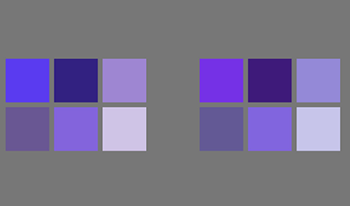Back to articles
Regular Articles
Volume: 3 | Article ID: jpi0321-edi

From the Editor
DOI : 10.2352/J.Percept.Imaging.2020.3.2.020101 Published Online : March 2020
Journal Title : Journal of Perceptual Imaging
Publisher Name : Society for Imaging Science and Technology
Subject Areas :
Views 53
Downloads 8
Cite this article
Bernice Rogowitz, Thrasos Pappas, "From the Editor" in Journal of Perceptual Imaging, 2020, pp 020101-1 - 020101-1, https://doi.org/10.2352/J.Percept.Imaging.2020.3.2.020101
Copyright statement
Copyright © Society for Imaging Science and Technology 2020
We are pleased to introduce the latest issue of the Journal of Perceptual Imaging. The papers in this issue demonstrate the range of topics and approaches embraced by the journal. Basic and applied research, low-level visual and high-level cognitive approaches, and a range of different scientific and technical topics. All the papers are united by a common intent - using principles of human perception and cognition to inform design decisions, and to use emerging technologies to inspire new research questions for perceptual research.
This issue introduces a new topic to the JPI canon- material perception. The goal of the two papers in this category is to develop models based on measurable material features that automatically predict high-level, subjective impressions of materials. In the Watanabe, et al. paper, experimental subjects made high-level judgments about the authenticity of genuine and artificial leather, and these qualitative judgments were successfully modeled with respect to low-level color and goniometric properties of the materials.
The Gotoh paper explores the relationship between lower-level material properties and high-level semantic descriptors, looking in this case at the exterior crinkle-paint finish of a camera. To capture the key features of these physical surfaces, they also developed a multi-angle measurement system that allowed them to capture important material features of these surfaces.
The Hellwig paper moves us into color, a major topic for the Journal of Perceptual Imaging. For color imaging applications, the ultimate goal is to create a computable color space where equal steps in the color space correspond to equal perceptual steps. This paper introduces a new color space based on the observation that hues appear to be equal if the central wavelengths of their Gaussian spectra are equal. The authors show that hue linearity in this space meets or exceeds that of other widely used color spaces.
Moving up the food chain, Eftekarifar, et al., varied motion parallax and stereopsis cues to understand their effect on presence. In addition to asking the subjects to answer survey questions, they measured their electrodermal activity. In their experiment they asked the subjects to cross a narrow plank over a deep virtual abyss, providing insight into the operation of these cues in a more ecological environment.
Our next issue is scheduled for publication early next year. As always, papers for upcoming issues will be available online as soon as they have been accepted and produced for publication.
Coming this Spring, we will launch our first guest-edited issue. We are pleased to share that Dr. Lora Likova, and colleagues, are editing a special issue on multisensory perception, the study of how inputs from vision, audition, touch and even smell combine and interact. The submission deadline for this issue is December 1, 2020.
Looking for a place to publish research that is multidisciplinary, or doesn’t fit into a silo? The Journal of Perceptual Imaging welcomes your manuscripts. Each paper is reviewed by three experts, whose backgrounds align with the different aspects of your multidisciplinary research.
 Find this author on Google Scholar
Find this author on Google Scholar Find this author on PubMed
Find this author on PubMed